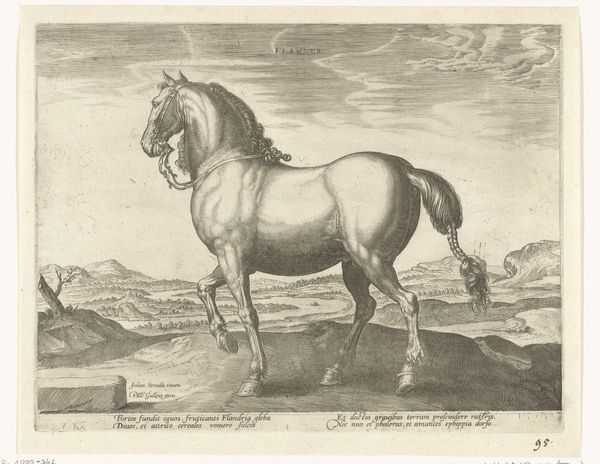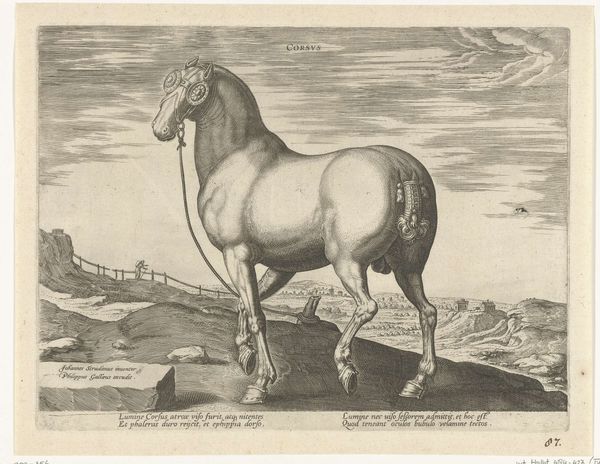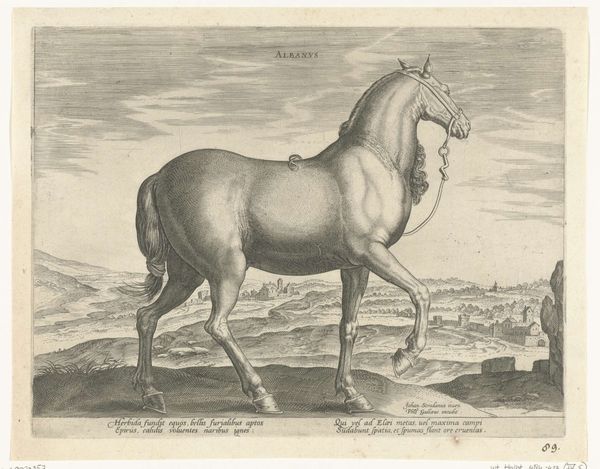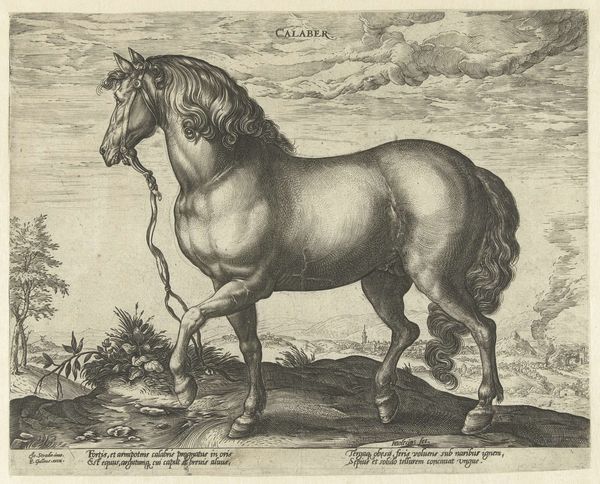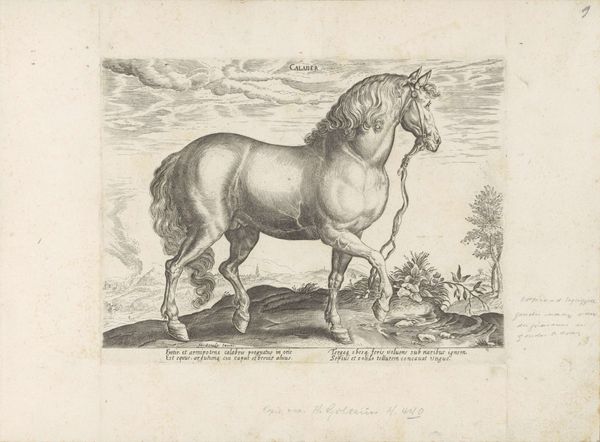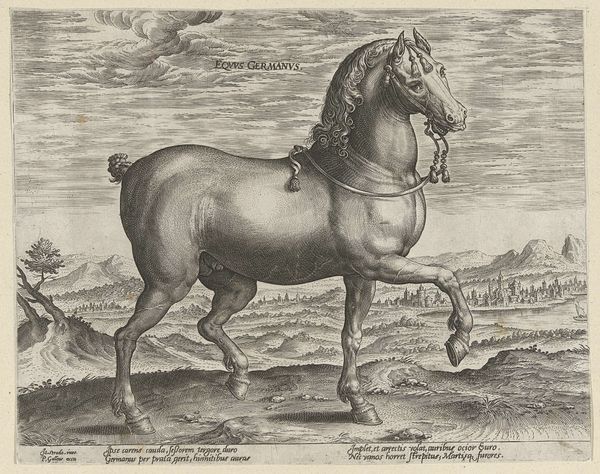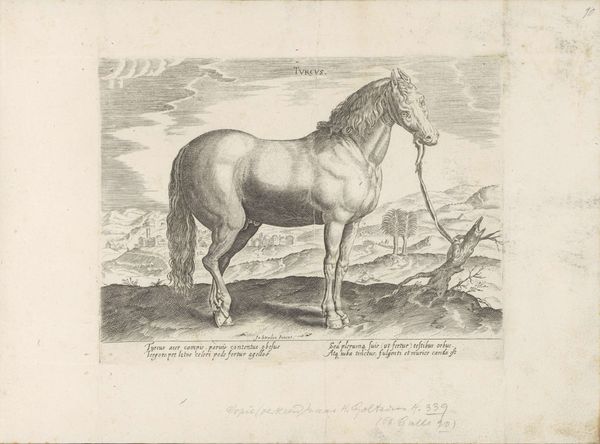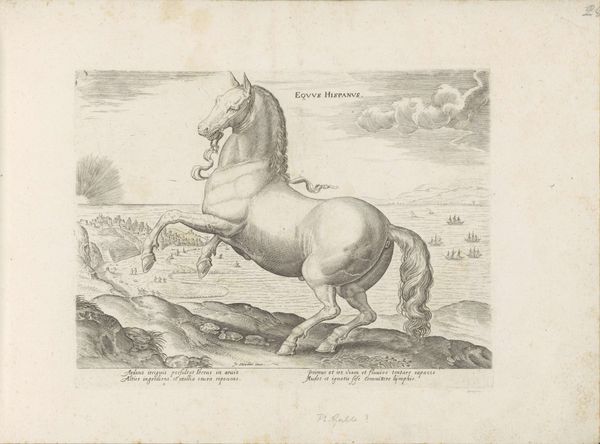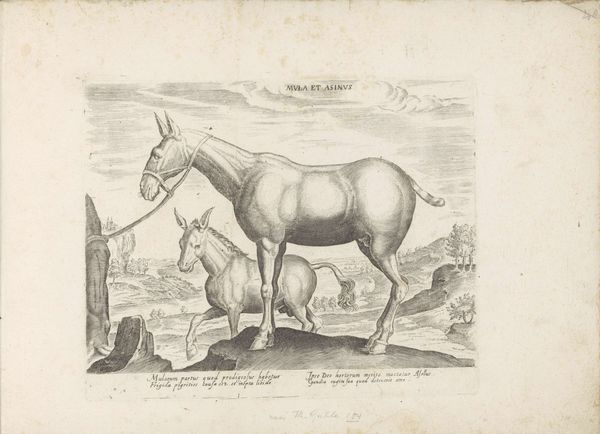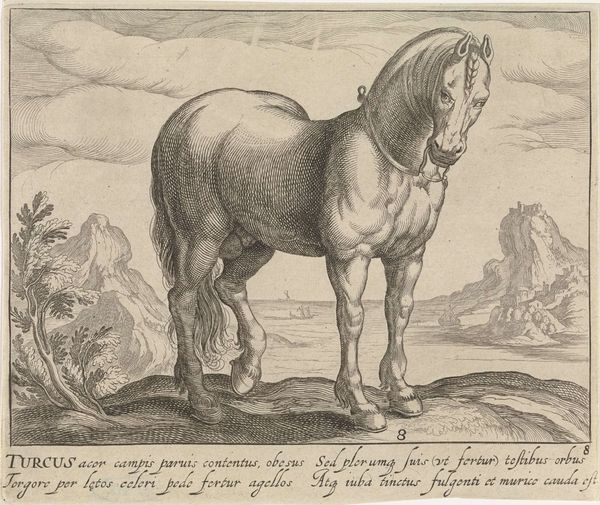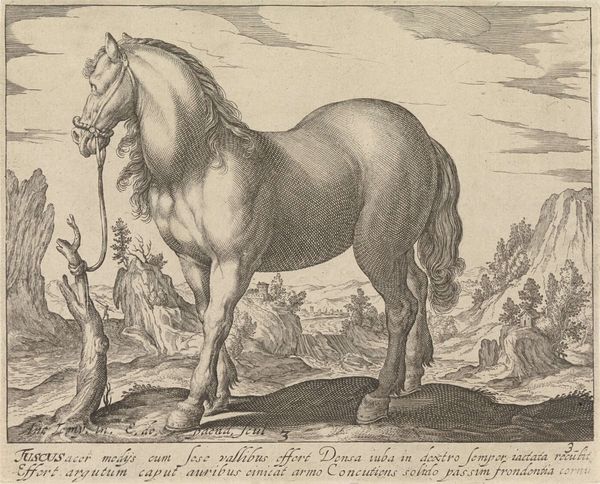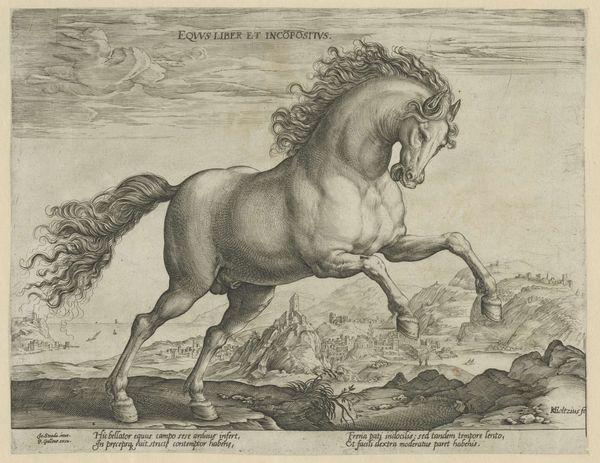
print, metal, engraving
# print
#
metal
#
landscape
#
mannerism
#
figuration
#
form
#
pencil drawing
#
engraving
Dimensions: width 263 mm, height 205 mm
Copyright: Rijks Museum: Open Domain
Editor: Here we have Hendrick Goltzius' "Paard uit Noord-Italië (Insuber)," an engraving from around 1578-1582. It’s a very formal portrait of a horse. I'm struck by the somewhat artificial pose and the highly detailed landscape surrounding it. What do you see in this piece? Curator: The horse, or "Paard" as the title suggests, transcends a mere animal portrait. In that era, the horse embodied power, aristocracy, even human virtues. Notice the inscription "INSYBER" above the horse. Do you think it carries significance? Editor: It must! I’d guess it's the breed or the specific horse’s name, marking its importance or unique lineage, almost like a heraldic symbol. Curator: Precisely! The Insuber region itself alludes to a cultural identity – Northern Italy. This connects the image to a particular historical context. And how about the landscape itself? Does that communicate anything beyond simply background? Editor: Now that you mention it, the landscape, while detailed, feels almost staged. It’s less about a specific place and more about creating a setting that emphasizes the horse’s stature. The classical ruins and tiny boats might be visual cues referring to grand historical narratives. Curator: Excellent observation. Goltzius masterfully integrates visual symbols, tapping into collective cultural memory. This isn’t just a picture of a horse. It’s an assertion of power, lineage, and connection to classical ideals. It tells a very clear story about cultural identity and historical aspiration. Editor: So it’s more about the symbolic weight of the horse, the region, and the landscape rather than just representational accuracy. Fascinating! I see so much more now than I did initially. Curator: And through understanding those symbols, we see how this image acted as a vehicle for emotional, cultural and psychological ideals that people valued centuries ago.
Comments
No comments
Be the first to comment and join the conversation on the ultimate creative platform.
